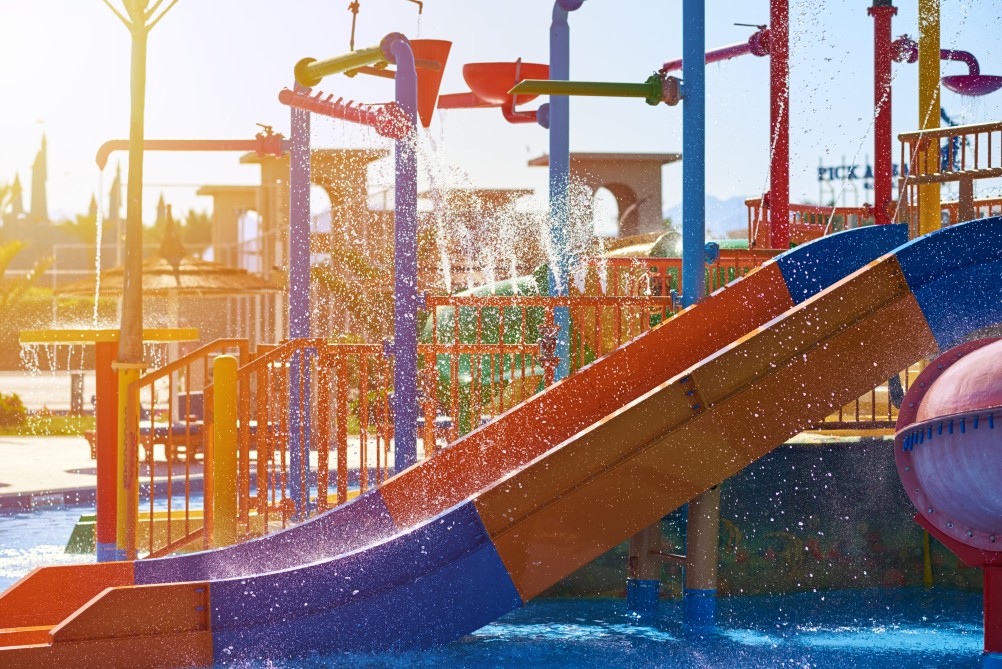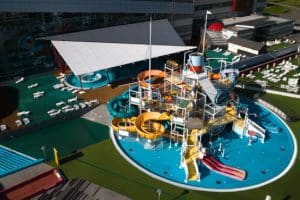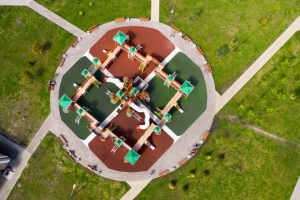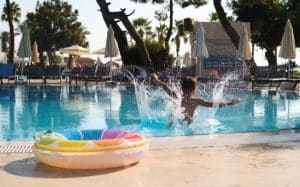For the past few years, there has been a growing emphasis on toughness and environmental conservation in different sectors of the economy including construction sites for splash pads. It is important to think about what might be implied by materials used for long-term sustainability while still providing fun spaces for kids and families as communities work towards creating attractive recreational areas. There are several advantages associated with using sustainable resources during this process.
Reduced Environmental Impact
The first benefit is decreased ecological footprints left behind by projects through the use of sustainable resources in splash pad construction. Commonly used materials such as concrete and plastics have severe effects on the environment at each stage including manufacturing, transportation and disposal. Conversely; recycled rubber among others like renewable wood or eco-friendly substitutes of concrete is designed to minimize consumption rates as well as wastage quantities.
Moreover, splash pad contractors or splash pad suppliers can conserve natural reserves, cut greenhouse gas emissions generated from splash pad construction activities and reduce dependence on non-renewable inputs which all represent steps towards meeting an ever-increasing desire for eco-friendly products thus showing commitment towards sustainable development within regions served by them.
Long Lastingness & Low Maintenance
Secondly, sustainable materials used in building splash pad systems are often created with the ability to resist severe weather conditions like heavy rainfalls or snow falls coupled with strong winds besides being exposed continuously under water containing chemicals while enduring high levels of pedestrian traffic, especially during summer seasons when most people visit recreational centers.
For example; this kind of play area surfacing is popular because it has slip-resistant properties as well as resilience against abrasion caused by dragging objects across it thus making a rubberized safety surface the ideal choice where kids play a lot.
Similarly, some renewable woods including bamboo together with recycled plastic lumber are highly resistant towards decay caused by fungi attacks, termites’ pests, etcetera so they can withstand them better than other types hence giving longer life expectancy structures found within these parks. Such low maintenance requirement materials necessitate infrequent need repairs thereby saving time and money for suppliers/contractors in the future.
More safety & accessibility
Another thing related to sustainable development in regard to splash pad construction is the improvement of safety. Different types of surfacing materials have slip resistance characteristics among other shock absorbent properties, which make them safe places for playing, especially for children who are still learning how to balance themselves.
Additionally, there are sustainable material options that can be used by splash pad contractors or splash pad suppliers to create inclusive play spaces suitable for kids with disabilities such as those confined wheelchairs or having visual impairments.
For example, rubberized safety surfaces help prevent slipping incidents while eco-friendly substitutes for concrete could be textured coloured so as to improve visibility way find persons having impaired vision. By considering safety alongside access during design installation processes; ensures people live up to their expectations about parks being fun-filled centers where everyone regardless of abilities may participate freely.
Adhering to Regulations and Certifications
Incorporating sustainable materials in the splash pad construction can be a way of ensuring conformity with local, regional, national as well as international standards when it comes to environmental conservation during building processes. Most green products are usually certified by different bodies like LEED (Leadership in Energy and Environmental Design) or have environmental product declarations (EPDs), which make them suitable for use by contractors working on water parks since this helps them meet set rules in that particular sector of the economy.
These stakeholders may also keep up with future legal requirements while presenting themselves as accountable partners within the context of constructing splash pads by supporting sustainable development through using eco-friendly components.
Opportunity for Education
Furthermore, making these kinds of facilities out of such things serves not only entertainment purposes but educational ones too, where people get educated about responsibility towards nature through interactive means. In other words, what we mean here is that kids need places where they can go and have fun while at the same time learning how important it is for them to take care of our environment even from a tender age.
It would be a good idea if splash pad contractors could work hand-in-hand with schools around their location so that together they come up with signs or other instructional materials showing learners some sustainable features incorporated into any given splash-pad project. Such teachings should also touch on things like benefits brought about by recycling materials used – something which may help foster deeper understanding among young ones besides creating awareness about living in harmony with nature all year round.
By doing so communities will convert these centres into knowledge hubs thereby motivating future generations towards adopting green habits hence making our society more conscious ecologically eventually.
Conclusion
Choosing sustainable splash pad construction alternatives for water parks has wider implications than just conserving the environment. This is because it leads to reduced ecological footprints and enhanced safety features, which in turn attracts many people thus fostering social cohesion among different groups within society. Besides that, such likable places are also cost-effective since they can be managed by communities themselves thereby saving on maintenance costs as well as generating revenue through various activities carried out at these sites. Therefore, whenever splash pad contractors or splash pad suppliers want to create recreational areas that are both fun and friendly towards nature conservation; then going green must form part of their strategy for sustainable development in communities around them.
Oasis WaterPlaygrounds: The leading professional Splash Pads Contractors and Suppliers
Oasis Water Playgrounds, the leading splash pad company and a splash pads supplier, builds dynamic spaces that support the community through water parks and fountains. Our tailor-made installations are integrated into public spaces, playgrounds and other recreational centres on a year-to-year basis. It is the right time to have an initial consultation about how we can incorporate the latest safety-rated equipment and green alternatives to make your project more attractive with interactive cool water features for young children. If you are looking for some splash park products in 2023 which offer an inclusive play environment while creating unforgettable summer memories throughout your community, refer to our catalogue items. Contact Oasis Water Playgrounds now to get something really unique!






